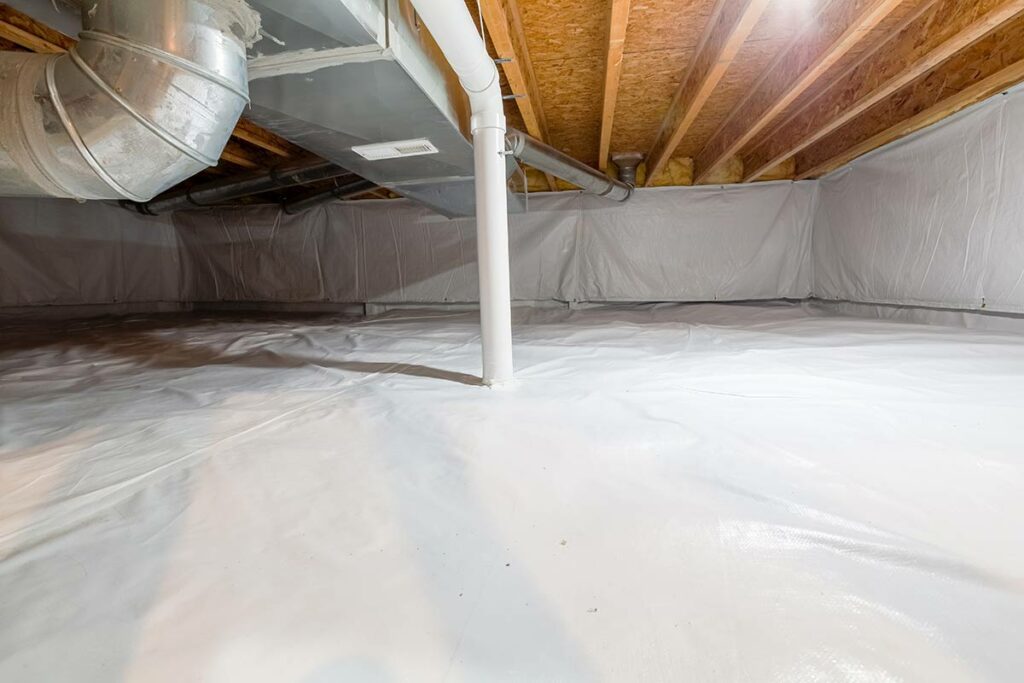Imagine stepping into your home, only to be met with a musty odor and damp, cold air emanating from below. Your crawl space, the often-forgotten space beneath your house, has become a breeding ground for moisture, potentially compromising the structural integrity of your home and creating an unhealthy living environment. But fear not! With the right knowledge and techniques, you can keep your crawl space dry and maintain a healthy, comfortable home.

Image: falconecrawlspace.com
Your crawl space plays a crucial role in your home’s overall well-being. It provides a buffer between the cold, damp ground and your living space, helping regulate temperature and humidity. However, if moisture accumulates in the crawl space, it can lead to a host of problems, including:
- Rotting wood and deteriorating structural beams
- Mold growth, releasing harmful spores into the air
- Pest infestations, attracted to damp environments
- Increased energy bills as your HVAC system works harder to dehumidify your home
To prevent these issues and ensure a healthy, dry crawl space, follow these comprehensive steps:
1. Inspect and Seal: A Thorough Examination
Begin by donning protective gear and venturing into your crawl space. Thoroughly inspect the area, taking note of any moisture sources, such as leaks, cracks, or damaged pipes. Seal any gaps or holes with caulk or weatherstripping to prevent moisture infiltration from the outside.
2. Ventilation: Airing Out the Dampness
Adequate ventilation is key to keeping your crawl space dry. Install vents along the perimeter of your crawl space foundation to allow for cross-ventilation. These vents should be screened to prevent pests from entering. Additionally, you may consider installing a dehumidifier or air exchanger to circulate air and remove excess moisture.
3. Proper Drainage: Guiding Water Away
Ensure proper drainage around your home to prevent water from seeping into your crawl space. Install gutters and downspouts to channel rainwater away from your foundation. Consider grading your yard so that water flows away from your house.

Image: www.theatticspecialist.com
4. Moisture Barriers: A Protective Shield
Installing a vapor barrier on the ground of your crawl space can prevent moisture from rising from the soil. Use a durable plastic sheeting and seal it around the perimeter to create an effective barrier. You can also consider covering the walls with a vapor barrier to further reduce moisture buildup.
5. Insulation: Trapping Heat, Reducing Moisture
Insulating your crawl space walls and ceiling can help trap heat, reducing the risk of condensation. Use insulation specifically designed for crawl spaces and ensure it is properly installed to prevent gaps or air pockets.
6. Ground Cover: Protecting from Soil Moisture
Covering the ground of your crawl space with gravel or concrete can help prevent moisture from the soil from evaporating into the air. This can significantly reduce humidity levels and keep your crawl space drier.
7. Sump Pump: A Backup against Floods
If your crawl space is prone to flooding, consider installing a sump pump. This device will automatically pump out any excess water that accumulates, preventing damage to your home.
How To Keep A Crawl Space Dry
8. Regular Maintenance: Staying Vigilant
Regularly inspect your crawl space for any signs of moisture or damage. Clean out any debris or standing water, and check for leaks or other issues that could compromise the dryness of your crawl space.
Remember, a dry crawl space is a healthy crawl space, protecting your home and your family’s well-being. By following these comprehensive steps, you can effectively prevent moisture buildup and maintain a dry, comfortable crawl space year-round.